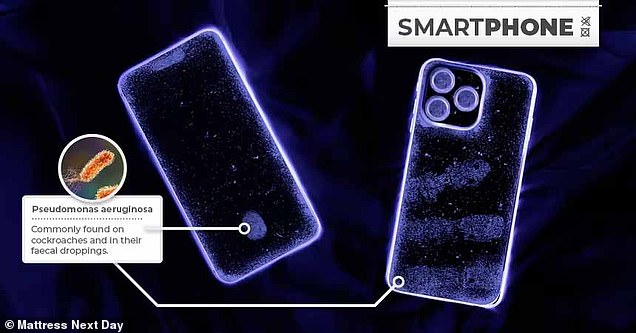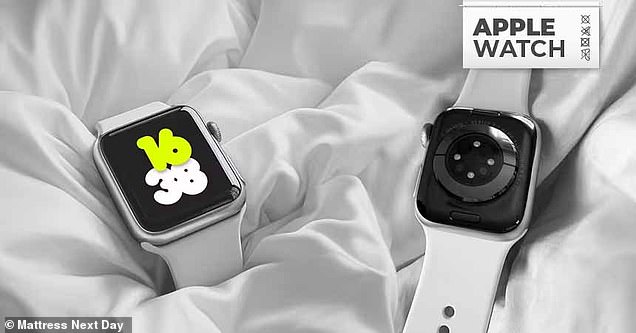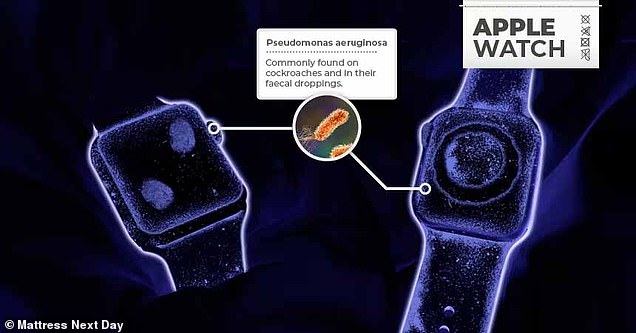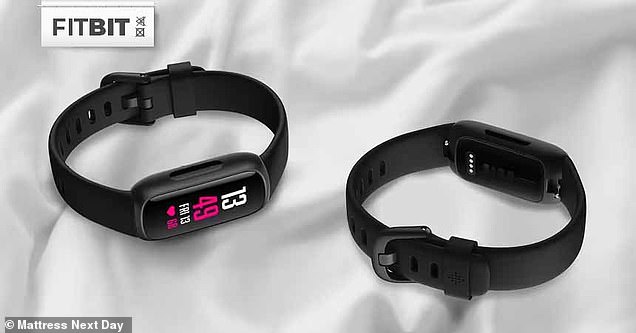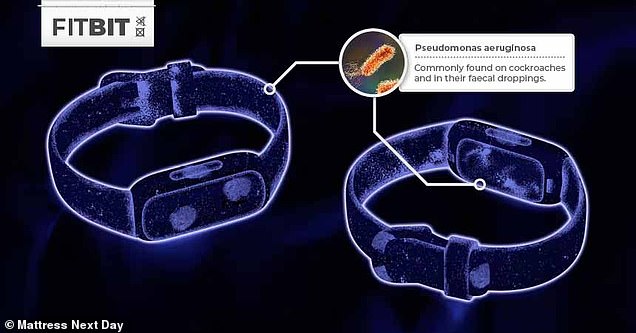Doomscrolling on social media before falling asleep is a bad habit that many of us would like to kick.
But scientists now warn that using your phone in bed could harm more than just your sleep pattern.
According research sponsored by MattressNextDay, Your phone could harbor harmful bacteria usually found in cockroach droppings.
Contact with these germs can cause rashes, pneumonia and even sepsis in vulnerable people.
Worse yet, scientists warn that the warm, moist environment of bedding is the perfect “Petris dish” for this pathogen to grow and spread.
Researchers have found another reason to avoid scrolling through your phone at night, revealing that your device could harbor bacteria usually found in cockroach feces (file image)
Researchers took samples from the smartphones and revealed that they harbor large amounts of the potentially harmful bacteria Pseudomonas aeruginosa.
Given that the average person touches their phone about 2,617 times a day, it’s no surprise that our devices can quickly become extremely unhygienic.
Previous studies have found that the buttons on your smartphone can contain up to 10 times more bacteria than a toilet seat.
To see exactly what types of bacteria our devices could be hiding, the researchers sampled 10 smartphones and 10 smartwatches.
The bacteria on the swabs were then allowed to grow in the lab so the researchers could see what types of microbes were present.
This revealed that the smartphone was the dirtiest piece of technology, with even more bacteria than had previously been found on germ hotspots such as the TV remote control.
The most common bacteria that lives on phones, watches, and Fitbits is Pseudomonas aeruginosa, a bacteria commonly found in cockroach feces.
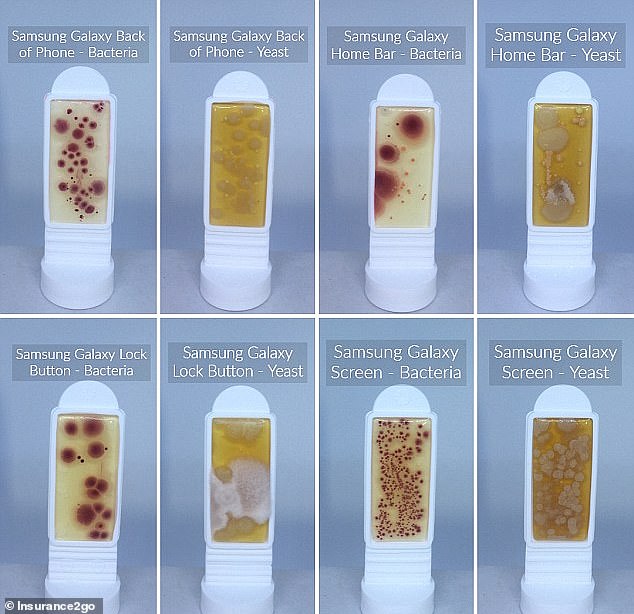
Researchers have found that your phone could contain up to 10 times more bacteria than your toilet seat. These images show colonies of bacteria and yeast grown from samples taken from several smartphones.
Previous studies have found that one in eight cockroaches caught in hospitals carries this potentially harmful bacteria.
This is particularly worrying for the millions of Britons who take their phones to bed.
A survey of 575 adults conducted by MattressNextDay found that 74 percent of respondents sleep with their phones next to their head or under their pillow.
Scientists warn that this potentially exposes you to harmful bacteria that live on your phone.
To make matters worse, Pseudomonas aeruginosa thrives in the warm, humid climates found in your bed.
Although many people wear a smartwatch in bed to measure their sleep patterns, the devices have been found to harbor large amounts of bacteria.

This study reveals that the phone is one of the dirtiest objects in the home and contains even more bacteria than the toilet or television remote control
Research has found that the average person sweats up to 700 ml per night and that bed temperatures often reach temperatures of 20°C.
This creates the ideal environment for bacteria to grow and potentially infect you.
Martin Seeley, sleep expert and CEO of MattressNextDay, says, “Remember, your bed should be a sanctuary for rest, not a petri dish for potentially harmful bacteria.”
While Pseudomonas aeruginosa is harmless in most cases, it can lead to more serious health complications.
Exposure to the bacteria can cause eye infections, skin rashes, pus-filled pimples, diarrhea, and headaches, among other conditions.
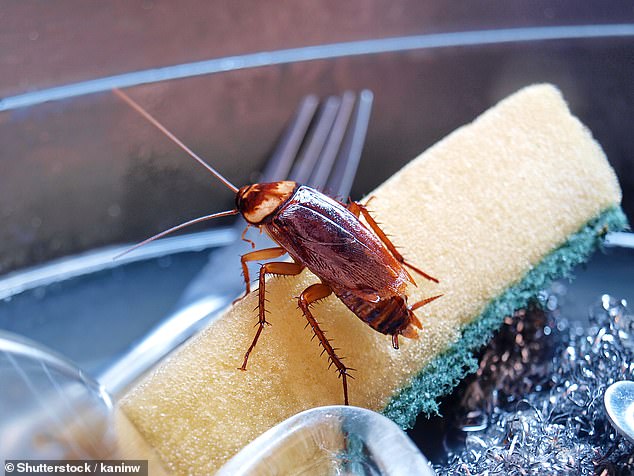
Previous studies have found that one in eight cockroaches carry the bacteria Pseudomonas aeruginosa (file image)
For those with weakened immune systems, the consequences can be even more dire.
Pseudomonas aeruginosa can cause a variety of infections in vulnerable people, including pneumonia, urinary tract infections and even sepsis.
In the hospital setting, it is known that this bacteria born from cockroaches is one of the main causes of infections among patients with poor health.
To make matters worse, this bacteria is known for its antibacterial resistance, making infections even more difficult to treat.
Luckily, experts say there are some simple steps you can take to reduce your risk of infection.
The hot, sweaty conditions created by exercise are perfect for bacteria to grow; This makes sports devices like the Fitbit a particular hotbed for germs.
Periodically cleaning your phone with alcohol wipes or a UV sanitizer will kill any bacteria that may be living on your device.
Be sure to pay special attention to areas that come into contact with your face, such as your phone screen or smartwatch band.
Simply cleaning your phone is so effective at reducing infections that Narita International Airport, Japan, has experimented with the introduction of “smartphone toilet paper.”
These sanitary wipe rolls were placed next to regular toilet paper and can be used to remove any germs your phone may have picked up in the bathroom.


A previous study revealed the bacteria that commonly grow on your smartphone. This includes Staphylococcus aureus which causes staph infections.
However, despite how easy it is to disinfect your devices, the survey found that 51 percent of people have never cleaned their smartphones.
Additionally, another simple way to reduce exposure to harmful bacteria is to limit how often your phone touches your face.
This could include keeping your phone out of bed or taking regular breaks from using technology at bedtime.
Seeley adds, “By implementing these simple hygiene practices, we can all sleep a little better knowing we aren’t sharing our beds with cockroach-related bacteria.”



